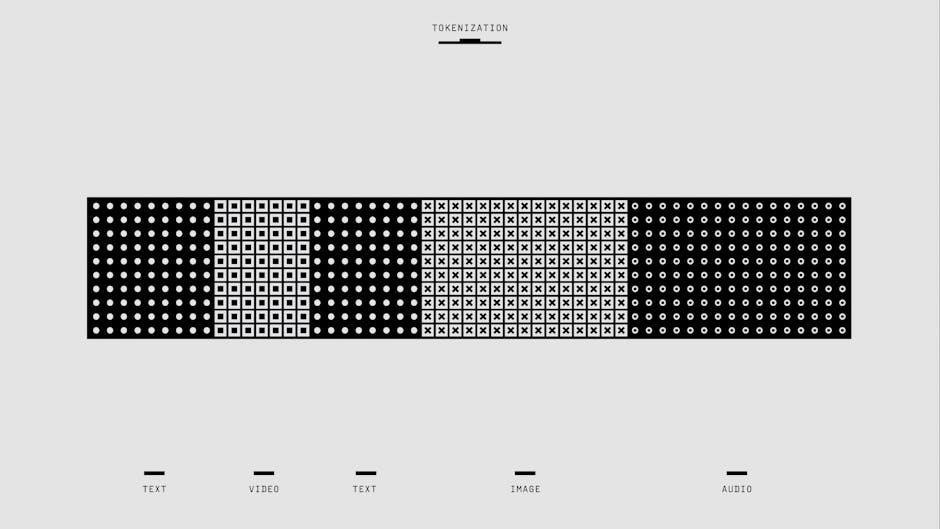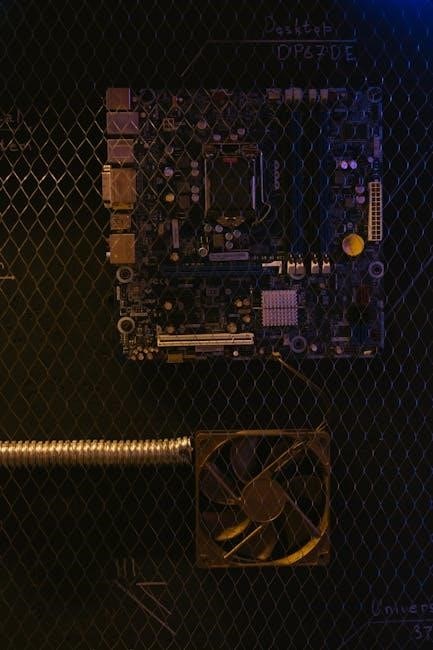System design interviews evaluate candidates’ ability to create scalable, efficient, and maintainable systems. They test problem-solving, communication, and technical skills, crucial for modern software development roles.
Overview of System Design Interviews
System design interviews assess a candidate’s ability to conceptualize and architect large-scale systems. They focus on scalability, performance, and maintainability, requiring both technical depth and communication skills; These interviews often involve designing systems from scratch, such as distributed storage or real-time applications, and analyzing trade-offs. The process evaluates problem-solving, collaboration, and the ability to handle ambiguity. Candidates must demonstrate proficiency in key concepts like microservices, database design, and cloud computing. The goal is to simulate real-world challenges, ensuring the candidate can design systems that meet business needs while balancing complexity and efficiency. This approach aligns with industry practices, preparing developers for advanced roles.
Importance of System Design in Software Development
System design is pivotal in software development as it defines the architecture and scalability of applications. It ensures systems are efficient, reliable, and adaptable to growing demands. By focusing on modularity and maintainability, system design enables teams to build solutions that withstand technological evolution. Proper design minimizes technical debt and enhances user experience. It also facilitates collaboration, as clear architectural plans align team efforts. In real-world scenarios, such as distributed file storage or e-commerce platforms, robust system design is critical for handling high traffic and ensuring seamless functionality. Thus, it forms the backbone of successful software solutions.

Preparation Strategies for System Design Interviews
Effective preparation involves understanding scalability, microservices, and database design. Practice with mock interviews, focus on real-world problems, and leverage resources like “System Design Interview Vol. 2 PDF” for insights.
Understanding the Basics of System Design
Mastering system design fundamentals involves grasping core concepts like scalability, reliability, and maintainability. Study distributed systems, microservices architecture, and database management to build a strong foundation. Learn how to break down complex problems into manageable components and design solutions that handle high traffic and large datasets efficiently. Familiarize yourself with trade-offs in system design, such as consistency vs. availability, and understand the importance of fault tolerance and redundancy. Practice defining system requirements and creating high-level architectures to prepare for real-world challenges in software development.
Key Concepts to Focus On
When preparing for system design interviews, focus on scalability, reliability, and maintainability. Understand how to design systems that handle high traffic and large datasets efficiently. Study concepts like load balancing, caching, and database sharding to improve performance. Learn about microservices architecture, including service discovery and communication. Familiarize yourself with trade-offs, such as consistency vs. availability in distributed systems. Practice designing for fault tolerance and redundancy to ensure system robustness. Additionally, focus on behavioral aspects like communication skills and problem-solving techniques to effectively present and defend your designs during interviews.

Recommended Resources for Preparation
For effective preparation, leverage resources like “System Design Interview Vol. 2 PDF,” which offers in-depth insights and practical examples. Supplement your learning with books such as The Pragmatic Programmer and System Design Primer. Online platforms like Leetcode and GeeksforGeeks provide hands-on practice with real-world problems. Additionally, enroll in Coursera courses on distributed systems and cloud computing to strengthen your foundational knowledge. Joining online communities like Reddit’s r/systemdesign can also provide valuable discussions and feedback. Combining these resources ensures a well-rounded preparation strategy, helping you master both theoretical and practical aspects of system design.

Fundamental Concepts in System Design
System design involves creating scalable, efficient, and maintainable systems. Key concepts include understanding scalability, performance metrics, architecture patterns, and trade-offs. System Design Interview Vol. 2 PDF provides detailed insights into these fundamentals, offering practical examples and best practices to build robust systems. Mastery of these concepts is essential for designing real-world applications effectively.
Scalability and Performance
Scalability and performance are critical in system design, ensuring systems handle growing workloads efficiently. System Design Interview Vol. 2 PDF explores scaling strategies, such as horizontal and vertical scaling, and load balancing. It emphasizes optimizing performance through caching, database indexing, and efficient algorithms. Understanding trade-offs between consistency, availability, and partition tolerance (CAP theorem) is also highlighted. The guide provides practical examples and best practices to design systems that scale gracefully while maintaining high performance and responsiveness. These concepts are essential for building modern, distributed applications that meet real-world demands.
Microservices Architecture
Microservices architecture is a design approach that structures applications as a collection of loosely coupled, independently deployable services. Each service is responsible for a specific business function and can be developed, deployed, and scaled individually. This modular approach enhances scalability, flexibility, and fault isolation. The System Design Interview Vol. 2 PDF dives into designing microservices, covering service discovery, communication protocols, and API gateways. It also addresses challenges like distributed transactions and monitoring. The guide emphasizes best practices for implementing microservices, ensuring systems are resilient, maintainable, and adaptable to changing requirements. This architecture is ideal for large-scale, complex applications.
Database Design and Management
Database design and management are critical in system design, ensuring data efficiency, integrity, and scalability. The System Design Interview Vol. 2 PDF covers key considerations, including relational vs. NoSQL databases, data modeling, and normalization. It explores trade-offs between ACID and CAP theorem principles, impacting consistency and availability. The guide also discusses indexing strategies, query optimization, and distributed database patterns. Practical examples and best practices are provided to handle high availability, backup strategies, and schema evolution. This section equips interviewees with the skills to design robust database systems tailored to real-world applications.

Common System Design Interview Questions
The System Design Interview Vol. 2 PDF covers essential questions like designing a URL shortener, distributed storage systems, and scalable e-commerce platforms, offering practical insights.
Designing a Distributed File Storage System
Designing a distributed file storage system requires balancing scalability, fault tolerance, and data consistency. The System Design Interview Vol. 2 PDF provides in-depth guidance, covering key aspects such as architecture design, data replication strategies, and partitioning mechanisms. It explores challenges like handling high concurrency, ensuring low latency, and managing data recovery. The guide offers practical examples and real-world insights, helping candidates understand how to optimize systems for reliability and performance. By addressing these concepts, the resource equips interviewees with the knowledge to tackle complex storage system challenges effectively.
Building a Scalable E-commerce Platform
Building a scalable e-commerce platform involves designing for high traffic, large inventories, and seamless user experiences. The System Design Interview Vol. 2 PDF emphasizes strategies like load balancing, distributed database systems, and caching mechanisms to ensure performance. It highlights the importance of microservices architecture for modularity and scalability. Key considerations include handling peak loads, implementing efficient payment gateways, and ensuring data consistency. The guide also covers techniques for optimizing product catalogs and order management systems. By mastering these concepts, candidates can design robust e-commerce solutions that scale effectively with business growth. This section is essential for understanding real-world scalability challenges.
Creating a Real-time Chat Application
Creating a real-time chat application requires handling instantaneous messaging, user scalability, and seamless communication. The System Design Interview Vol. 2 PDF explores key components such as WebSockets for bi-directional communication and long-polling for fallbacks. It discusses backend architectures using Node.js or similar technologies and database choices like NoSQL for high write throughput. Load balancing, message queuing, and microservices are emphasized for scalability. Security considerations, such as encryption and authentication, are also covered. The guide provides insights into managing real-time features like presence, typing indicators, and notifications, ensuring a robust and efficient chat system design. This section is crucial for understanding modern communication systems.

Case Studies and Real-world Examples
The System Design Interview Vol. 2 PDF provides real-world examples of large-scale systems, such as Netflix and WhatsApp, highlighting scalable architectures and design trade-offs.
Analysis of Popular System Designs
The System Design Interview Vol. 2 PDF dives into the analysis of renowned system architectures, such as Netflix’s distributed streaming platform and Google’s search engine. It explores how these systems achieve scalability, reliability, and performance through microservices, load balancing, and data replication. The guide also examines trade-offs in design decisions, such as consistency vs. availability in distributed databases. By breaking down real-world examples, it offers actionable insights into building robust systems. Readers gain a deeper understanding of industry best practices and how to apply them in their own designs. This section is invaluable for learning from proven solutions.
Lessons Learned from Successful Systems
The System Design Interview Vol. 2 PDF highlights key lessons from successful systems, emphasizing scalability, reliability, and maintainability. It underscores the importance of designing for failure and implementing redundancy. The guide illustrates how systems like Amazon’s e-commerce platform prioritize consistency and availability through distributed databases. It also stresses the value of continuous monitoring and logging for proactive issue resolution. By learning from these real-world examples, engineers can avoid common pitfalls and build more robust systems. These insights are crucial for developing a mature understanding of system design principles and their practical applications.
Common Pitfalls to Avoid
The System Design Interview Vol; 2 PDF identifies common pitfalls candidates face during interviews, such as overcomplicating designs or neglecting scalability. It warns against ignoring non-functional requirements like latency and throughput. Another mistake is focusing too much on coding details rather than high-level architecture. The guide also highlights the importance of avoiding premature optimization and ensuring trade-offs are clearly communicated. By addressing these pitfalls, candidates can present well-rounded solutions that align with industry best practices. These insights help aspirants refine their approach and deliver polished designs during interviews.

Advanced Topics in System Design
The System Design Interview Vol. 2 PDF explores advanced concepts like cloud-native architectures, distributed systems, and modern design patterns, ensuring deep technical understanding for complex challenges.
Cloud Computing and Its Impact
Cloud computing has revolutionized system design by enabling scalable, on-demand resources and reducing infrastructure costs. The System Design Interview Vol. 2 PDF highlights its importance in modern architectures, focusing on service models like IaaS, PaaS, and SaaS. It explores cloud-native design patterns, such as serverless computing and microservices deployment. The guide also addresses security, scalability, and cost optimization in cloud environments. By mastering these concepts, developers can build efficient, resilient systems tailored to cloud platforms, ensuring high performance and adaptability in dynamic business landscapes. This knowledge is crucial for designing systems that align with industry trends and user demands.
Security Considerations in System Design
Security is a critical aspect of system design, ensuring data integrity, confidentiality, and availability. The System Design Interview Vol. 2 PDF emphasizes the importance of implementing robust security measures, such as authentication, authorization, and encryption. It covers strategies to mitigate common vulnerabilities, like SQL injection and cross-site scripting (XSS). The guide also explores compliance with regulations like GDPR and HIPAA, ensuring systems meet legal and ethical standards. By prioritizing security, developers can protect sensitive information and build trust with users. This section provides practical insights into designing secure systems from the ground up.
Optimizing for Cost and Efficiency
Optimizing for cost and efficiency is vital in system design to ensure resources are used effectively without compromising performance. The System Design Interview Vol. 2 PDF explores strategies to minimize operational expenses while maximizing throughput; It discusses principles like resource scaling, load balancing, and caching to enhance efficiency. The guide also highlights cost-effective infrastructure choices, such as cloud services, and provides tips for reducing latency and improving system responsiveness. By focusing on efficiency, developers can create cost-effective systems that deliver optimal performance, making them more sustainable and scalable for future growth. This section offers practical advice for balancing cost and performance effectively.

Behavioral and Technical Aspects
Behavioral and technical aspects are crucial for a well-rounded system design approach. This section emphasizes balancing soft skills with deep technical knowledge to create effective solutions.
Communication Skills in Design Interviews
Effective communication is vital in system design interviews. The ability to articulate complex ideas clearly and concisely helps convey your thought process. Practice explaining technical concepts in simple terms, using diagrams or whiteboarding to visualize solutions. Active listening and clarifying requirements demonstrate collaboration skills. Be prepared to justify design decisions logically and address trade-offs. Clear communication fosters confidence in your problem-solving abilities, making your design solutions more compelling to interviewers. This skill is emphasized in the System Design Interview Vol. 2 PDF as a key factor in successful interviews.
Technical Depth and Breadth
In system design interviews, balancing technical depth and breadth is crucial. Depth involves mastering specific areas like scalability, microservices, and database design, while breadth requires understanding various system aspects. The System Design Interview Vol. 2 PDF excels by providing comprehensive coverage of both. It offers detailed explanations of fundamental concepts, ensuring a strong foundation, while also exploring advanced topics like cloud computing and security. This resource helps aspirants develop a well-rounded expertise, enabling them to tackle diverse challenges confidently. By focusing on both depth and breadth, it prepares candidates to address complex design problems effectively.
Problem-solving Techniques
The System Design Interview Vol. 2 PDF emphasizes the importance of structured problem-solving techniques, providing actionable frameworks for tackling complex design challenges. By focusing on decomposition, trade-off analysis, and iterative refinement, candidates can systematically approach problems. The guide highlights the value of identifying key requirements early and prioritizing scalability and performance. It also offers practical strategies for communicating solutions clearly and effectively. These techniques are essential for breaking down intricate systems into manageable components, ensuring robust and efficient designs. Mastery of these methods significantly enhances a candidate’s ability to excel in real-world system design scenarios.

Mock Interviews and Practice
The System Design Interview Vol. 2 PDF highlights the importance of structured practice through mock interviews, enabling candidates to refine their problem-solving skills and confidence under timed conditions.
Conducting Effective Mock Interviews
Conducting effective mock interviews is crucial for assessing readiness and identifying areas for improvement. The System Design Interview Vol. 2 PDF emphasizes setting clear objectives, such as evaluating problem-solving skills or communication clarity. It suggests simulating real interview conditions, including time constraints and realistic scenarios, to replicate the pressure of actual interviews. The guide also recommends incorporating feedback mechanisms, allowing candidates to refine their approaches based on constructive criticism. Regular iteration and practice are highlighted as key to building confidence and mastery in system design problem-solving.
Practicing Under Time Constraints
Practicing under time constraints is essential to simulate real interview conditions, as highlighted in the System Design Interview Vol. 2 PDF. The guide emphasizes the importance of managing time effectively while designing systems. It suggests setting timers for each problem-solving phase, such as understanding requirements, brainstorming solutions, and finalizing designs. Regular timed exercises help build speed and accuracy, ensuring candidates can deliver coherent and scalable solutions within strict deadlines. This practice also enhances confidence and reduces anxiety during actual interviews, making it a critical component of preparation.
Receiving and Implementing Feedback
Receiving and implementing feedback is a crucial step in refining system design skills, as outlined in the System Design Interview Vol. 2 PDF. The guide stresses the importance of actively seeking feedback from peers, mentors, or interviewers to identify blind spots. It provides tips on how to analyze feedback constructively and prioritize areas for improvement. By incorporating feedback into practice, candidates can refine their problem-solving approaches and communication strategies. Regular iteration based on feedback ensures continuous growth and better preparation for real interviews, making it a cornerstone of effective learning.

System Design Interview Vol. 2 PDF Overview
The System Design Interview Vol. 2 PDF offers a comprehensive guide to mastering system design, covering scalability, microservices, and database design. It targets software engineers preparing for technical interviews, providing practical examples and real-world applications to enhance problem-solving skills and interview readiness.
Key Features of the Resource
The System Design Interview Vol. 2 PDF is a detailed guide offering in-depth insights into system design principles. It includes case studies, hands-on exercises, and real-world examples to help engineers master complex concepts. The resource provides clear explanations of scalability, microservices, and database design, making it ideal for technical interview preparation. It also covers emerging trends and best practices, ensuring readers stay updated with industry standards. The structured approach and practical examples enable learners to apply theoretical knowledge to real-world scenarios, enhancing their problem-solving skills and confidence in system design interviews.
Target Audience and Benefits
The System Design Interview Vol. 2 PDF is tailored for software engineers preparing for technical interviews, particularly those aiming for senior or lead roles. It benefits junior engineers looking to advance their skills and experienced professionals seeking to refresh their knowledge. The resource bridges the gap between theory and practice, offering practical insights into designing scalable and efficient systems. Readers gain a deeper understanding of real-world challenges and learn to articulate their solutions effectively, enhancing their confidence and problem-solving abilities during interviews.
Integration with Other Study Materials
The System Design Interview Vol. 2 PDF seamlessly integrates with other study materials, enhancing your preparation. It complements textbooks, online courses, and coding platforms by focusing on practical, interview-specific scenarios. Use it alongside video tutorials or practice problems to reinforce concepts.
Pair the PDF with mock interviews or group discussions to apply its strategies in real-time. This holistic approach ensures comprehensive preparation, making it a valuable addition to your study routine. By combining it with other resources, you can build a well-rounded skill set tailored to system design interviews.
Mastering system design requires practice, persistence, and a deep understanding of concepts. Use the System Design Interview Vol. 2 PDF as a guide to refine your skills and stay updated with industry trends for continuous improvement.
Summarizing the Key Takeaways
The System Design Interview Vol. 2 PDF provides a comprehensive guide to mastering system design concepts, offering practical examples and strategies for interview preparation. It covers scalability, microservices, and database design, while emphasizing the importance of understanding trade-offs and system constraints. The resource also highlights real-world applications and case studies, helping candidates grasp how to approach complex problems. By focusing on clear communication and technical depth, it equips aspirants with the tools to excel in interviews. Regular practice and feedback are encouraged to refine problem-solving skills and build confidence in designing robust systems.
Staying Updated with Industry Trends
The field of system design evolves rapidly, with new tools, frameworks, and methodologies emerging continuously. To excel in interviews, it’s crucial to stay informed about industry trends, such as cloud-native architectures, edge computing, and AI-driven systems. The System Design Interview Vol. 2 PDF incorporates the latest advancements, ensuring candidates are well-prepared for modern challenges. By leveraging this resource, aspirants gain insights into real-world applications and cutting-edge techniques, enabling them to design scalable and efficient systems. Regularly updating knowledge through blogs, courses, and industry reports further enhances one’s ability to tackle complex design problems effectively.
Continuous Learning and Improvement
Continuous learning and improvement are essential for excelling in system design interviews. The System Design Interview Vol. 2 PDF offers practical exercises and real-world examples to reinforce key concepts, along with case studies that highlight lessons learned from experienced professionals. Engaging in coding challenges and staying updated with industry trends enhance problem-solving skills. Teaching others and participating in mock interviews deepen understanding and identify knowledge gaps. Consistent practice and feedback are crucial for long-term growth. By leveraging these strategies, candidates can continuously refine their abilities and stay competitive in the ever-evolving tech landscape and adapt to new technologies.

